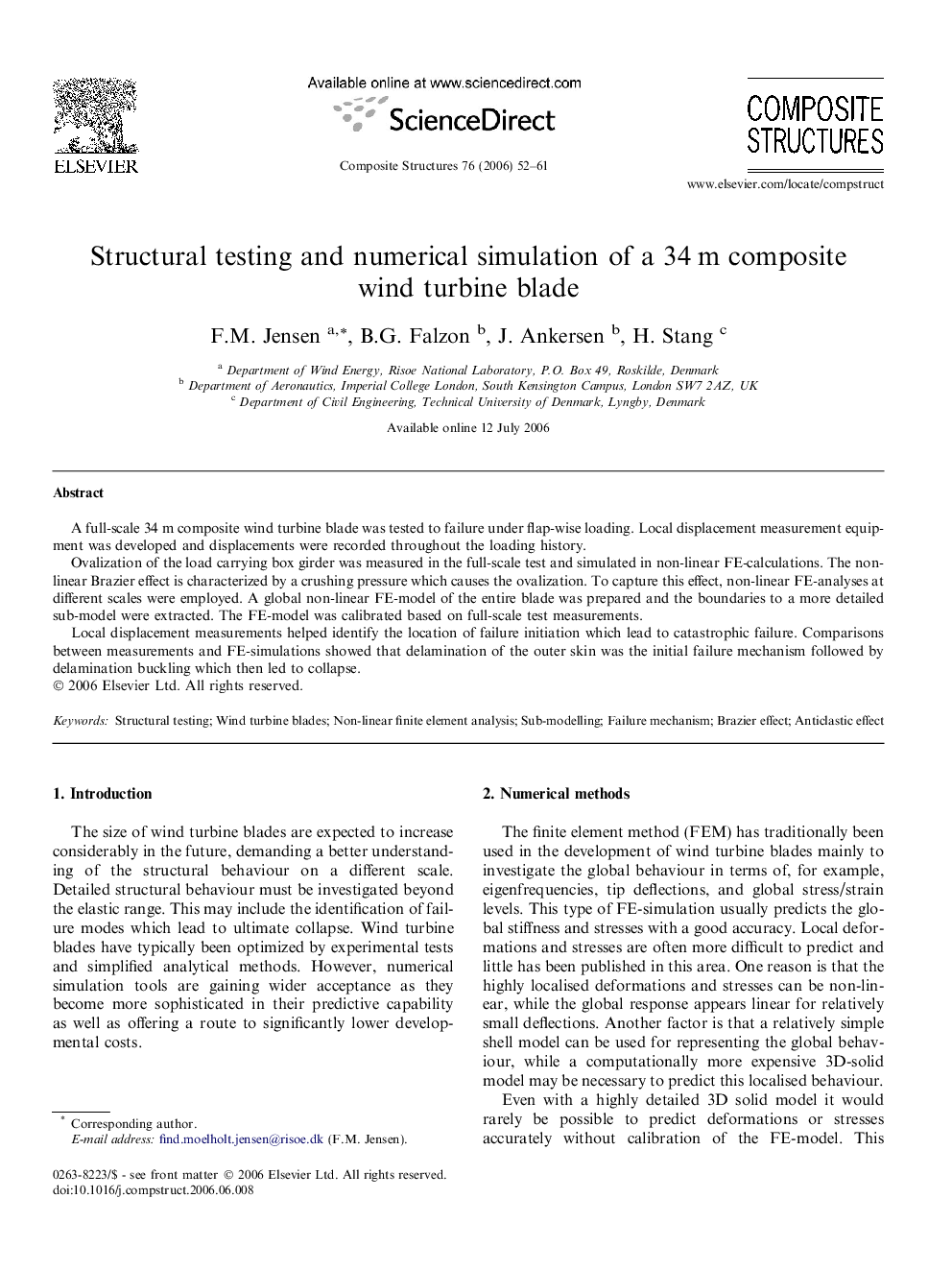| Article ID | Journal | Published Year | Pages | File Type |
|---|---|---|---|---|
| 254288 | Composite Structures | 2006 | 10 Pages |
A full-scale 34 m composite wind turbine blade was tested to failure under flap-wise loading. Local displacement measurement equipment was developed and displacements were recorded throughout the loading history.Ovalization of the load carrying box girder was measured in the full-scale test and simulated in non-linear FE-calculations. The non-linear Brazier effect is characterized by a crushing pressure which causes the ovalization. To capture this effect, non-linear FE-analyses at different scales were employed. A global non-linear FE-model of the entire blade was prepared and the boundaries to a more detailed sub-model were extracted. The FE-model was calibrated based on full-scale test measurements.Local displacement measurements helped identify the location of failure initiation which lead to catastrophic failure. Comparisons between measurements and FE-simulations showed that delamination of the outer skin was the initial failure mechanism followed by delamination buckling which then led to collapse.
